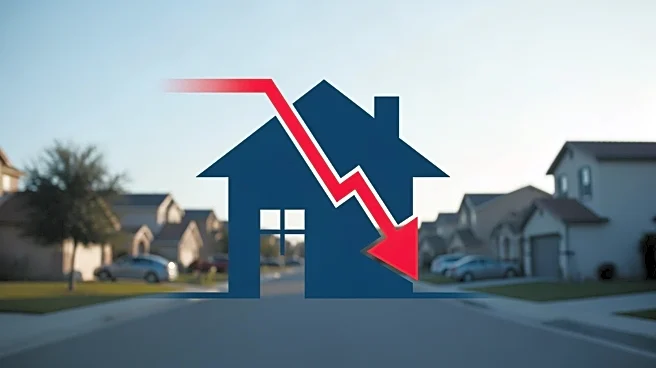What's Happening?
In September, the median home price in San Bernardino County was listed at $532,500, marking a 1.4% decrease from the previous month's $540,000, according to data from Realtor.com. This figure represents
a slight increase from September 2024, when the median price was $529,400. The typical home in the county was 1,636 square feet, with a listing price of $335 per square foot, a 1.1% decrease from the previous year. Homes in the area were on the market for a median of 71 days, longer than the national median of 62 days. The Riverside-San Bernardino-Ontario metro area also saw a slight decline in median home prices to $595,000. Across California, the median home price was $748,500, while the national median was $425,000.
Why It's Important?
The decline in median home prices in San Bernardino County reflects broader trends in the U.S. housing market, where prices have seen slight decreases. This trend may indicate a cooling in the housing market, which could impact potential buyers and sellers. For buyers, lower prices may present an opportunity to enter the market, while sellers might face challenges in achieving desired sale prices. The extended time homes remain on the market suggests a shift in buyer behavior or market saturation. These changes could influence local economies, real estate businesses, and housing policies, as stakeholders adjust to evolving market conditions.
What's Next?
As the housing market continues to adjust, potential buyers and sellers in San Bernardino County and beyond will need to monitor market trends closely. Real estate agents and policymakers may need to adapt strategies to address the changing dynamics, such as offering incentives or adjusting pricing strategies. The broader economic environment, including interest rates and employment trends, will also play a crucial role in shaping future housing market conditions. Stakeholders will likely keep a close watch on these factors to make informed decisions.
Beyond the Headlines
The current trends in the housing market may have deeper implications for economic inequality and access to affordable housing. As prices fluctuate, the gap between those who can afford to buy homes and those who cannot may widen, potentially exacerbating existing social and economic disparities. Additionally, the prolonged time homes spend on the market could signal a need for more diverse housing options to meet varying consumer needs. These developments may prompt discussions on housing policy reforms and initiatives to promote equitable access to homeownership.











